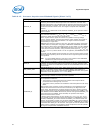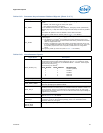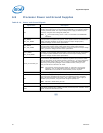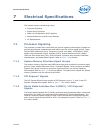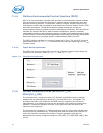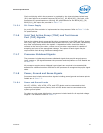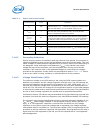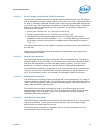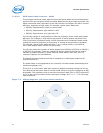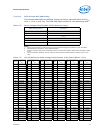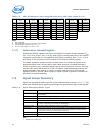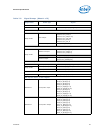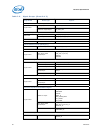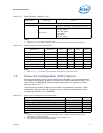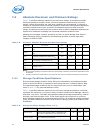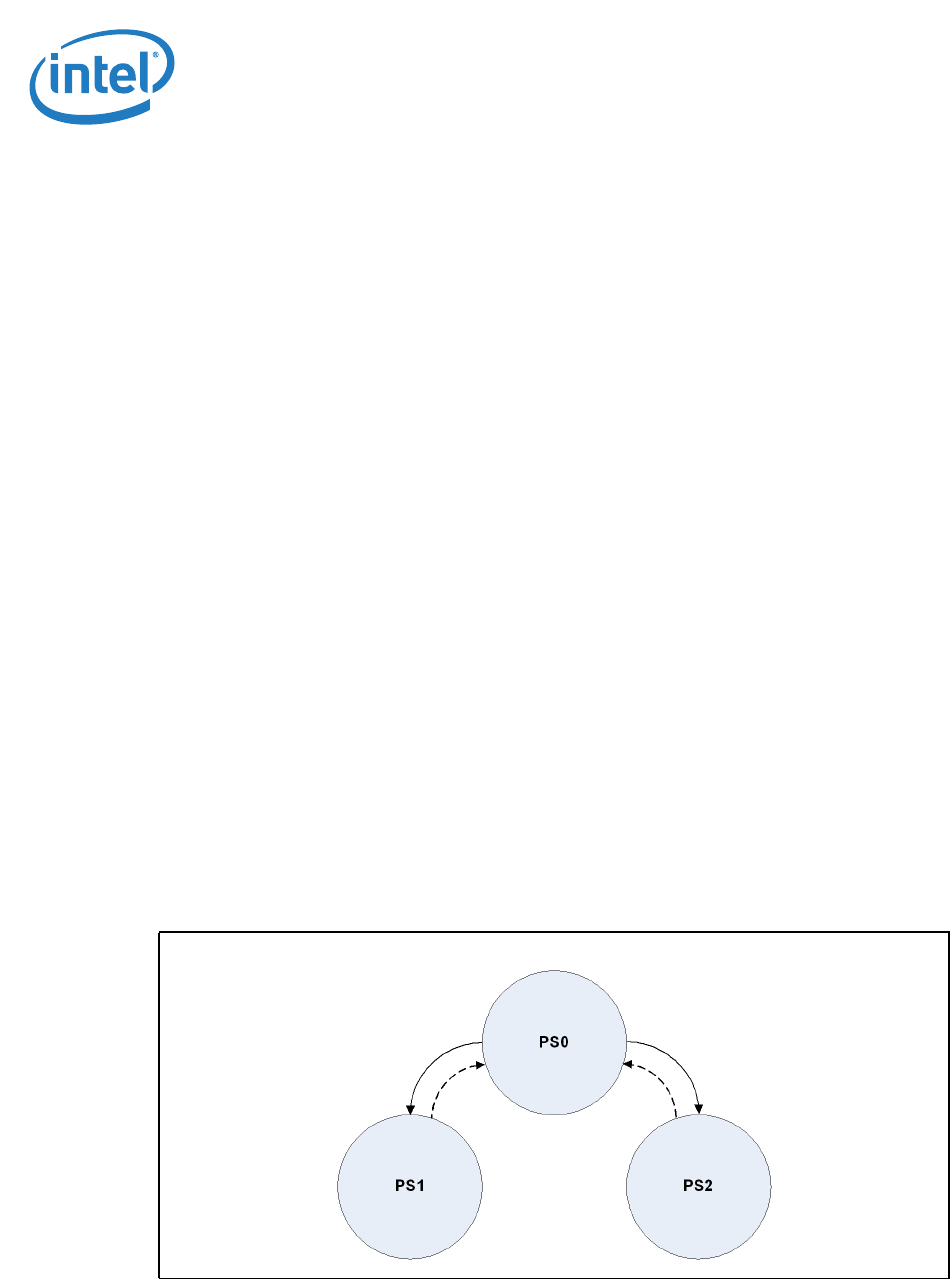
Electrical Specifications
56 Datasheet
7.1.8.3.5 SVID Power State Functions – SetPS
The processor has three power state functions and these states will be set seamlessly
with the SVID bus using the SetPS command. Based on the power state command, the
SetPS commands send information to the VR controller to configure the VR to improve
efficiency, especially at light loads. For example, typical power states are:
• PS(00h): Represents full power or active mode
• PS(01h): Represents a light load 5A to 20A
• PS(02h): Represents a very light load <5A
The VR may change its configuration to meet the processor power needs with greater
efficiency. For example, it may reduce the number of active phases, transition from
CCM (Continuous Conduction Mode) to DCM (Discontinuous Conduction Mode) mode,
reduce the switching frequency or pulse skip, or change to asynchronous regulation.
For example, typical power states are 00h = run in normal mode; a command of
01h= shed phases mode, and an 02h=pulse skip.
The VR may reduce the number of active phases from PS(00h) to PS(01h) or PS(00h)
to PS(02h) for example. There are multiple VR design schemes that can be used to
maintain a greater efficiency in these different power states; work with your VR
controller suppliers for optimizations.
The SetPS command sends a byte that is encoded as to what power state the VR
should transition to.
If a power state is not supported by the controller, the slave should acknowledge with
command rejected (11b).
If the VR is in a low-power state and receives a SetVID command moving the VID up,
the VR exits the low-power state to normal mode (PS0) to move the voltage up as fast
as possible. The processor must re-issue the low-power state (PS1 or PS2) command if
it is in a low-current condition at the new higher voltage. See Figure 7-2 for VR power
state transitions.
Figure 7-2. Voltage Regulator (VR) Power-State Transitions



